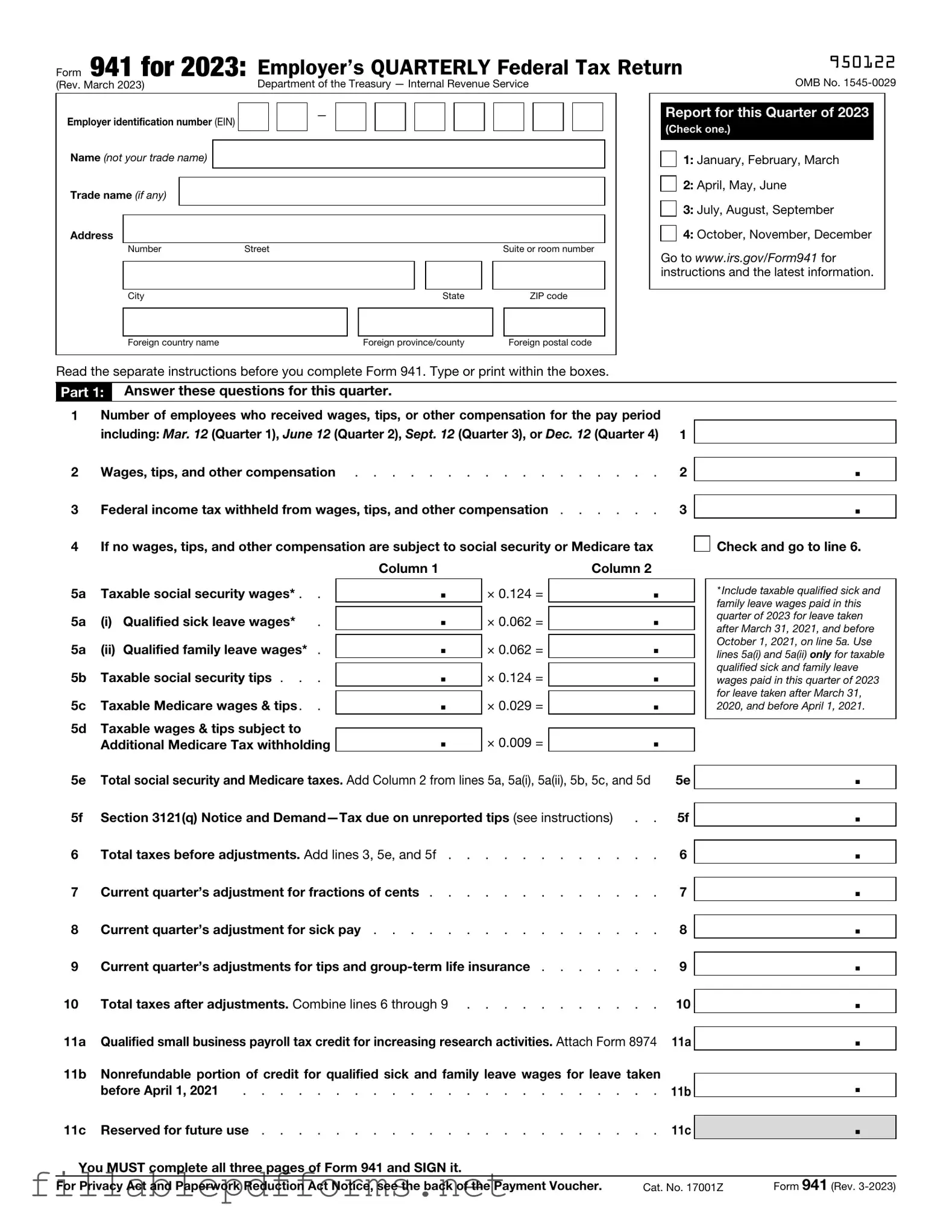The IRS 941 form plays a crucial role in the landscape of payroll taxes for employers in the United States. This quarterly tax return is designed for businesses to report income taxes withheld from employee wages, as well as the employer's share of Social Security and Medicare taxes. Each quarter, employers must accurately fill out this form to ensure compliance with federal tax laws and to avoid potential penalties. The form also provides essential information on the number of employees, total wages paid, and any adjustments made for previous quarters. Understanding the intricacies of the IRS 941 form is vital for business owners, as it not only impacts their tax obligations but also affects their employees' benefits. Timely filing and accuracy in reporting are key, as they contribute to the overall financial health of a business and its ability to meet tax responsibilities. With the right knowledge and preparation, navigating this form can become a manageable task for employers, ensuring that they stay on the right side of the IRS while supporting their workforce effectively.
